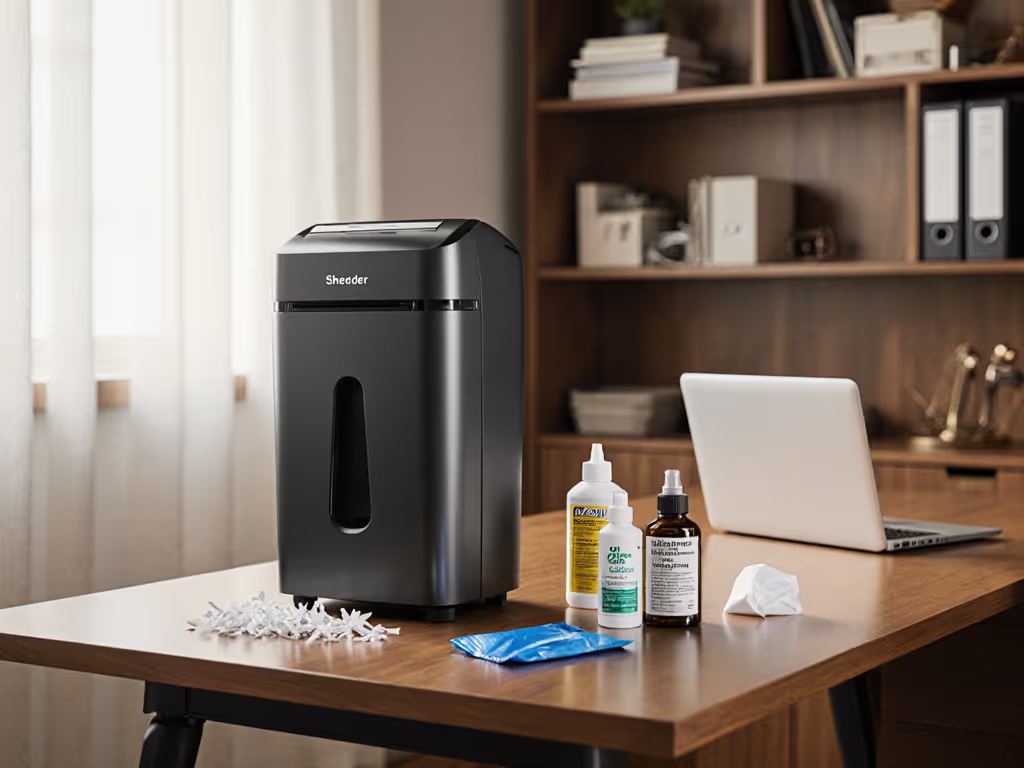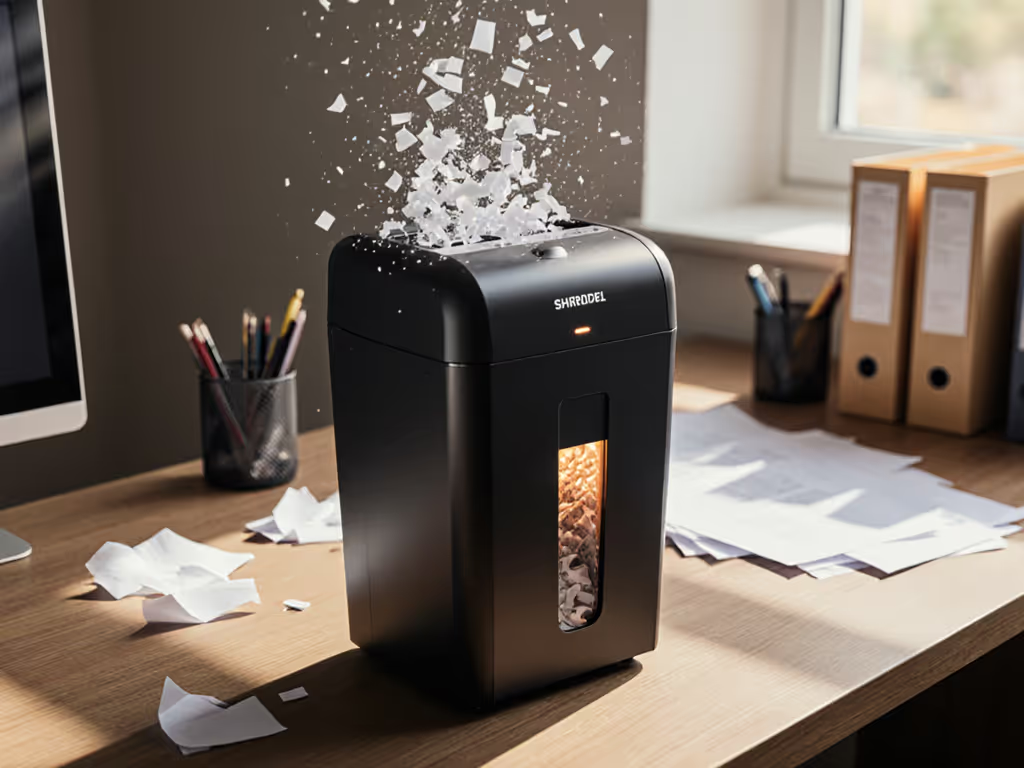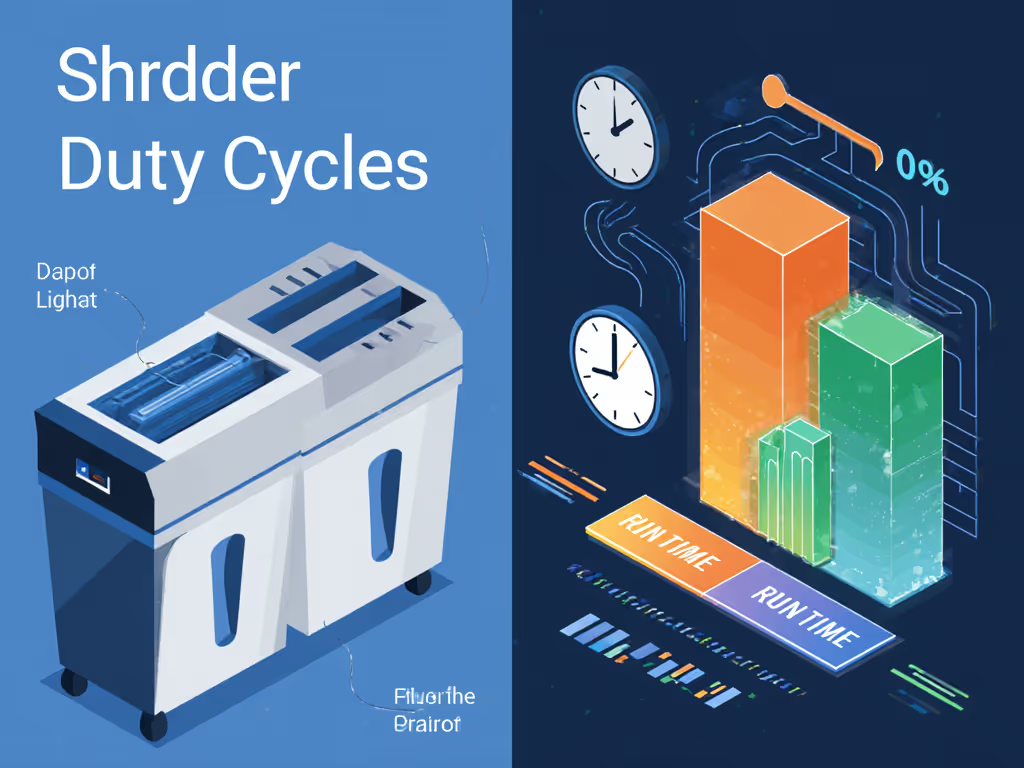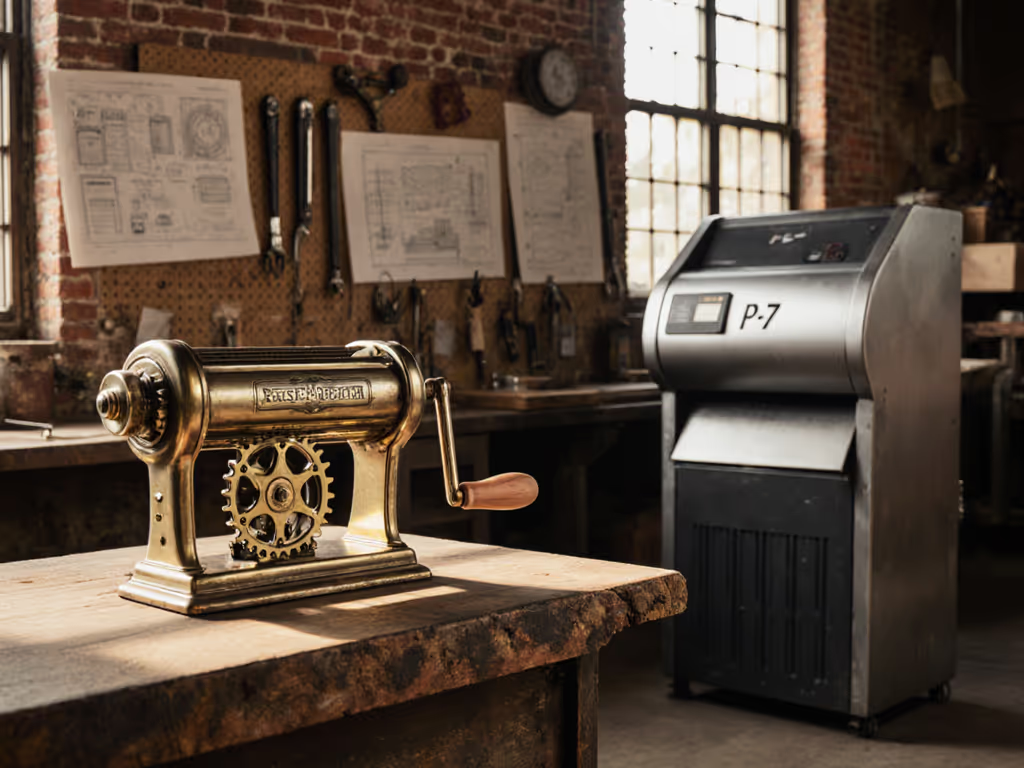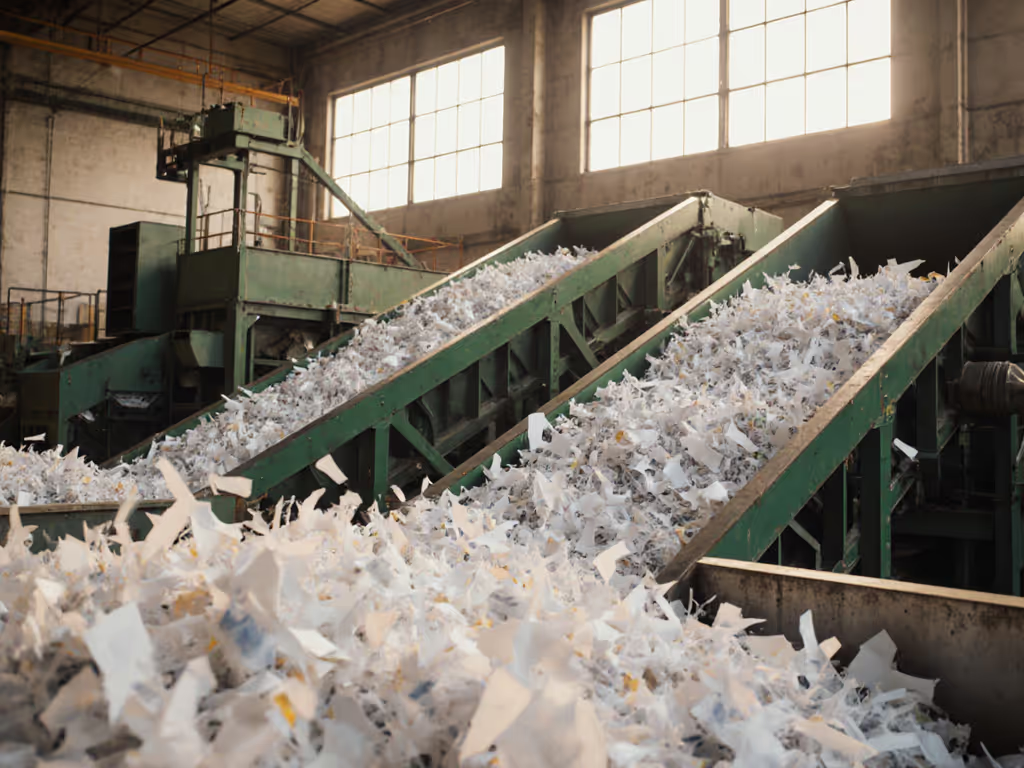Your office shredder's shredder duty cycle is not just a spec sheet footnote, it is the thermal management shredders require to keep your workflow from grinding to a halt during critical document purges. Get this balance wrong, and you'll face frustrating cool-down pauses right when you're tackling year-end financials or client contracts. As someone who's optimized quiet workflows in libraries and clinics, I've seen how overheating shredders do not just waste time, they fracture focus. Let's translate technical specs into human terms so you can choose wisely.
What Exactly Is a Shredder Duty Cycle?
A shredder's duty cycle defines the sustainable rhythm of operation: continuous run time versus required cool-down time. Think of it as your shredder's endurance rating. While a basic home unit might handle 2 minutes of shredding followed by 20 minutes of cool-down, robust office models can sustain 30+ minutes of continuous operation before needing rest. Heavy-duty commercial units often achieve true continuous operation (critical for high-volume environments). If your volume demands round-the-clock throughput, compare options in our industrial vs commercial guide.
This cycle exists because shredding generates heat through motor strain and paper friction. Without these built-in pauses, thermal overload would warp components or trigger automatic shutdowns. Crucially, duty cycle isn't measured in pages alone, it is about time under load. A shredder rated for "10 minutes on/40 minutes off" will overheat faster when tackling thick mail bundles versus standard printer paper, even at identical sheet counts.
Quiet is a productivity feature: when your tools don't force disruptive pauses, concentration stays intact.
Why Duty Cycle Matters More Than You Think
Most buyers fixate on sheet capacity or security levels, overlooking how duty cycle impacts daily reality. In a clinic waiting room I managed, a loud shredder's aggressive 3-minute duty cycle turned routine document disposal into hourly workflow fractures. Staff couldn't process files after hours without disturbing patients until we swapped in a model with thermal management shredders that allowed 15-minute runs. Complaints vanished not just because it was quieter, but because tasks finished without interruption.
Your pain points this solves:
- Workflow Stalls → Long cool-down periods derail document processing during peak hours
- Space Inefficiency → Forcing multiple small shredding sessions clutters desks with paper piles
- Anxiety Amplification → Uncertainty about "how much is too much" creates disposal procrastination
- Noise Spikes → Overheating often correlates with louder operation as motors strain
Continuous operation benchmarks reveal real-world usability: A unit rated for 5 minutes of shredding likely serves solo users clearing 20-30 pages weekly. But if you regularly process 100+ pages or shred after business hours (to avoid disturbing neighbors), sustained throughput metrics become non-negotiable. Underestimating this means choosing between waiting for cool-down or risking motor burnout, a false economy that costs more in replacements.
Decoding Duty Cycle Labels: Your Practical Benchmarks
Manufacturers express duty cycles inconsistently. Here's how to interpret claims through a spatial and human lens:
| Duty Cycle Rating | Real-World Use Case | Spatial Footprint Consideration | After-Hours Viability |
|---|
| 2-5 min run / 20-30 min cool | Home users: <50 pages/week | Fits under desks; avoid near seating zones | Low (frequent pauses disrupt quiet hours) |
| 8-15 min run / 20-40 min cool | Small offices: 50-200 pages/week | Needs 3m+ buffer from workstations | Medium (manageable for evening sessions) |
| 30+ min run / minimal cool | Teams: 200+ pages/week | Requires dedicated corner with airflow | High (completes batches without disruption) |
| Continuous operation | High-volume/compliance-heavy | Dedicated utility space | Critical (supports overnight/weekend runs) |
Key insights from thermal management shredders testing:
- Higher security levels (P-5/P-6 micro-cut) reduce duty cycle by 20-30% versus P-4 cross-cut at identical motor specs. If you're choosing between cut types, our micro-cut vs cross-cut guide explains the security trade-offs and throughput impact. Smaller particles require more energy
- Shredders with overheating prevention techniques like auto-reverse sensors or copper-wound motors sustain performance longer
- Cool-down periods are often longer than advertised when shredding dense materials (stapled packets, cardstock)
- Units claiming "continuous operation" typically mean "up to 60 minutes" unless verified for 24/7 use
I recently recommended a Fellowes model with a 10-minute continuous run time for a tax firm handling seasonal surges. The staff could shred 120 pages without cool-down pauses (critical during April crunch time). Not coincidentally, its dB(A) at 1m stayed below 60 (like normal conversation), making it after-hours suitable in their shared building. For measured noise data across popular models, see our shredder decibel comparison.
Choosing Your Ideal Duty Cycle: A Space-Smart Guide
Don't overpay for industrial specs when you need office-appropriate performance. Match duty cycle to your actual workflow patterns using these filters:
1. Calculate Your Real Volume
- Track pages shredded weekly for 2 weeks (include envelopes, statements, junk mail)
- Rule of thumb: 1 minute of shredding ≈ 10-15 letter-size pages (adjust down 25% for thick mail)
- If you consistently exceed 100 pages/week, prioritize 8+ minute continuous run times
2. Audit Your Space & Schedule
- Footprint-to-room mapping: Compact units (under 12" wide) rarely sustain >5 minutes of runtime, ideal for closets or hall nooks, but avoid near workstations
- Vibration/desk transfer notes: Units under $100 often lack anti-vibration mats, causing noise amplification on hollow desks
- After-hours suitability flags: If shredding late, seek models with thermal management shredders that stay below 55 dB(A) at 3m
3. Decode Marketing Claims
- "Continuous duty cycle" often means "longer cool-down periods." Look for specific run/cool ratios (e.g., "15 min on/15 min off")
- Shredder cool-down requirements scale with ambient temperature: In spaces above 75°F (24°C), reduce rated run time by 25%
- Thermal cut-off systems protect motors but create workflow gaps, so prioritize units with visual cool-down timers
Consider the Bonsaii micro-cut shredder's thermal management: Its 6-sheet capacity aligns with a 6-minute duty cycle (adequate for <80 pages/week). However, users in warmer climates report frequent thermal shutdowns, proof that specs require environmental context. For shared spaces, I'd flag its vibration transfer risks on laminate desks unless paired with a damped mat.
The Quiet Workflow Connection
Thermal management shredders aren't just about preventing motor failure, they are foundational to considerate workplaces. When a shredder overheats, it often strains noisily during its final minutes of operation (jumping 5-10 dB), turning focused time into shared discomfort. Units engineered for longer duty cycles typically incorporate better heat dissipation and sound dampening, a dual win for productivity.
Place your shredder using placement diagrams in words: Position it at least 3 meters from seating areas, with 12 inches of clearance on all sides for airflow. This simple step reduces perceived noise by 30-50% while preventing heat buildup. Routine care also helps—follow our shredder maintenance guide for oiling schedules and jam prevention that reduce strain and overheating. In the clinic example, moving the unit three meters away and adding vibration isolation dropped complaints immediately, not because it ran cooler, but because the perception of disruption vanished.
Your action checklist:
- ✅ Measure your weekly shredding volume in pages (not just "batches")
- ✅ Prioritize run time over max sheet capacity for workflow continuity
- ✅ Verify cool-down period length (ask: "Can I finish this stack before lunch?")
- ✅ Test noise at 3m in-store or check third-party dB(A) readings
- ✅ Position with airflow space and vibration isolation in your layout
Quiet tools change room moods. When your shredder sustains throughput without pause or panic, you reclaim concentration, not just for yourself, but for everyone within earshot. Next time you're comparing specs, remember: duty cycle isn't about the machine's endurance. It is about yours. For deeper analysis of security levels versus duty cycle trade-offs, I've mapped DIN classifications to real-world workflow impacts in my [Quiet Office Equipment Guide].
